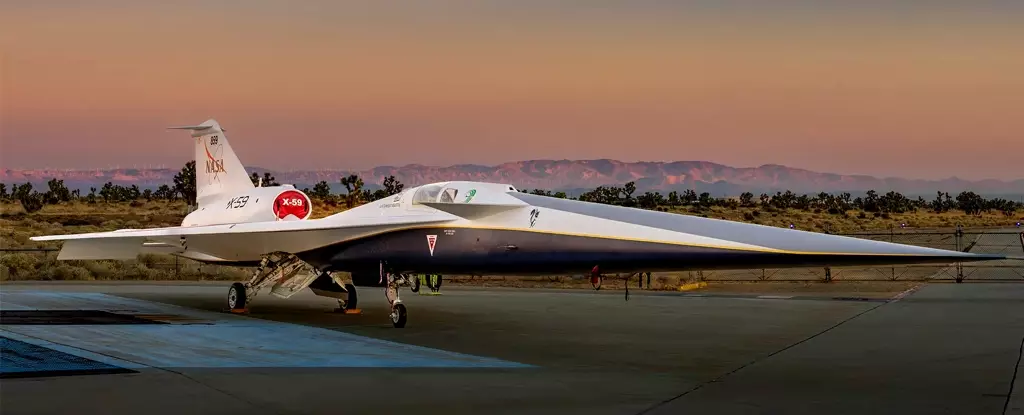The term space plane evokes a sense of awe and wonder, and NASA’s latest creation, the X-59, lives up to this expectation. This cutting-edge aircraft is a quiet supersonic plane that aims to minimize the sonic boom created when it surpasses the speed of sound. With a planned maiden flight scheduled for later this year, the X-59 is the result of a collaborative effort between NASA and Lockheed Martin. Its goal is both simple and ambitious: to revolutionize air travel by introducing a new generation of commercial jets capable of flying faster than the speed of sound.
Breaking the Sound Barrier
Supersonic flight refers to the ability to fly at speeds exceeding the speed of sound. At sea level, the speed of sound is approximately 1,224 km/hour, although it varies based on air density. Flying slower than this threshold is considered subsonic, while flying faster crosses into supersonic territory. When an aircraft breaks the sound barrier, it generates a sonic boom. Contrary to popular belief, the sonic boom is not a singular event that occurs at the moment of surpassing the speed of sound. Instead, it is a continuous sound resulting from compressed shock waves. Observers on the ground only experience the boom when the pressure waves pass over them. However, the sonic boom can be distressing, prompting the development of the X-59 to address this issue.
The X-59 boasts an exterior design reminiscent of science fiction films. Its sleek body spans 30 meters in length and 9 meters in width, with a thin and tapered nose accounting for approximately one-third of the overall length. This unique design aims to significantly reduce the shockwaves that give rise to the sonic boom. However, the elongated nose creates a challenge for the pilot, who sits about halfway along the plane. The window placement does not allow for a clear forward view. To tackle this issue, NASA has implemented the eXternal Vision System, which incorporates high-resolution cameras feeding live footage to 4K monitors in the cockpit.
The retirement of the Tupolev TU-144 in 1978 and the Concorde in 2003 marked the end of an era in supersonic flight. Since then, air travel has been confined to subsonic speeds, resulting in lengthy ocean crossings that can endure for several hours. In stark contrast, the Concorde was capable of completing a trans-Atlantic flight from JFK to Heathrow in under three hours. Present-day jets, however, require around seven hours for the same journey. NASA’s X-59 offers hope for a future where air travel becomes faster and more efficient on a global scale.
The X-59 space plane represents a paradigm shift in air travel. By addressing the concerns surrounding sonic booms, NASA and Lockheed Martin have embarked on a mission to revolutionize commercial aviation. The sleek and futuristic design, coupled with advanced technology like the eXternal Vision System, highlight the groundbreaking nature of this project. If the upcoming test flights prove successful, it could usher in a new era of air travel, where supersonic flight becomes the norm, and global destinations are within a few hours’ reach. The X-59 paves the way for a future where distance is no longer an obstacle, and exploration of the skies becomes a seamless experience for all.

Leave a Reply